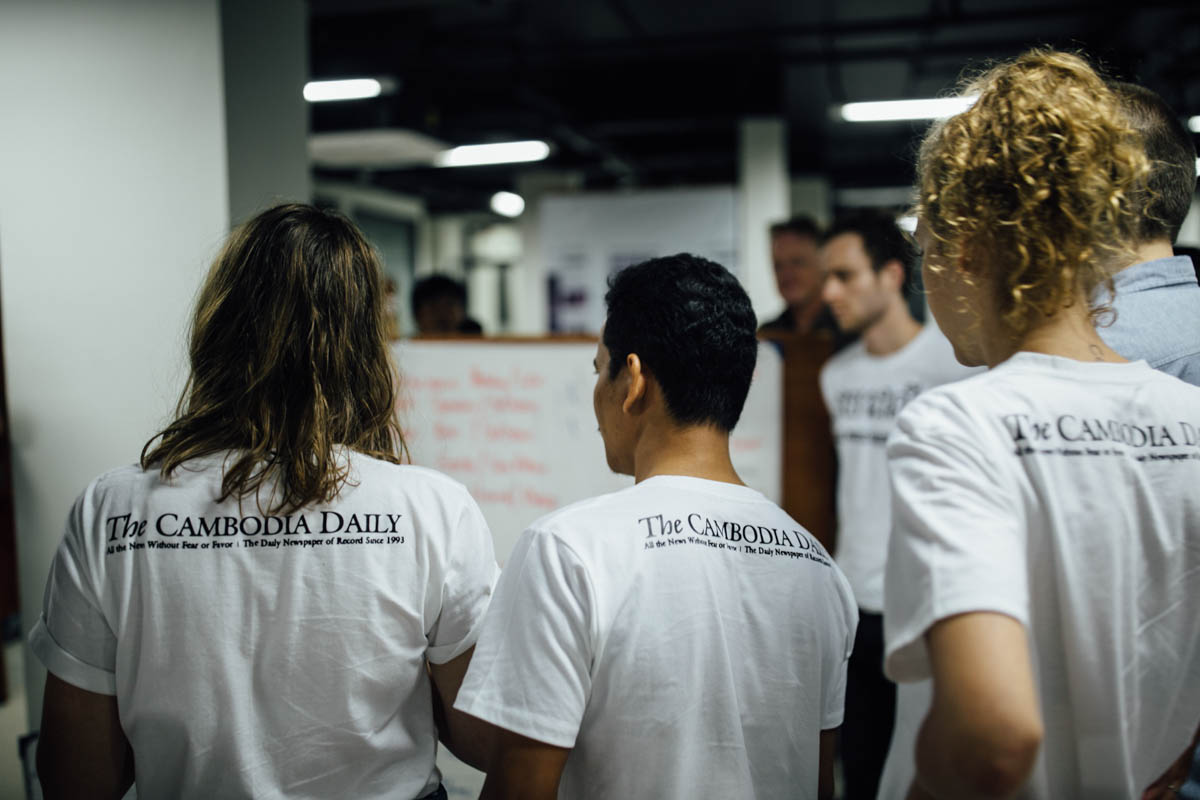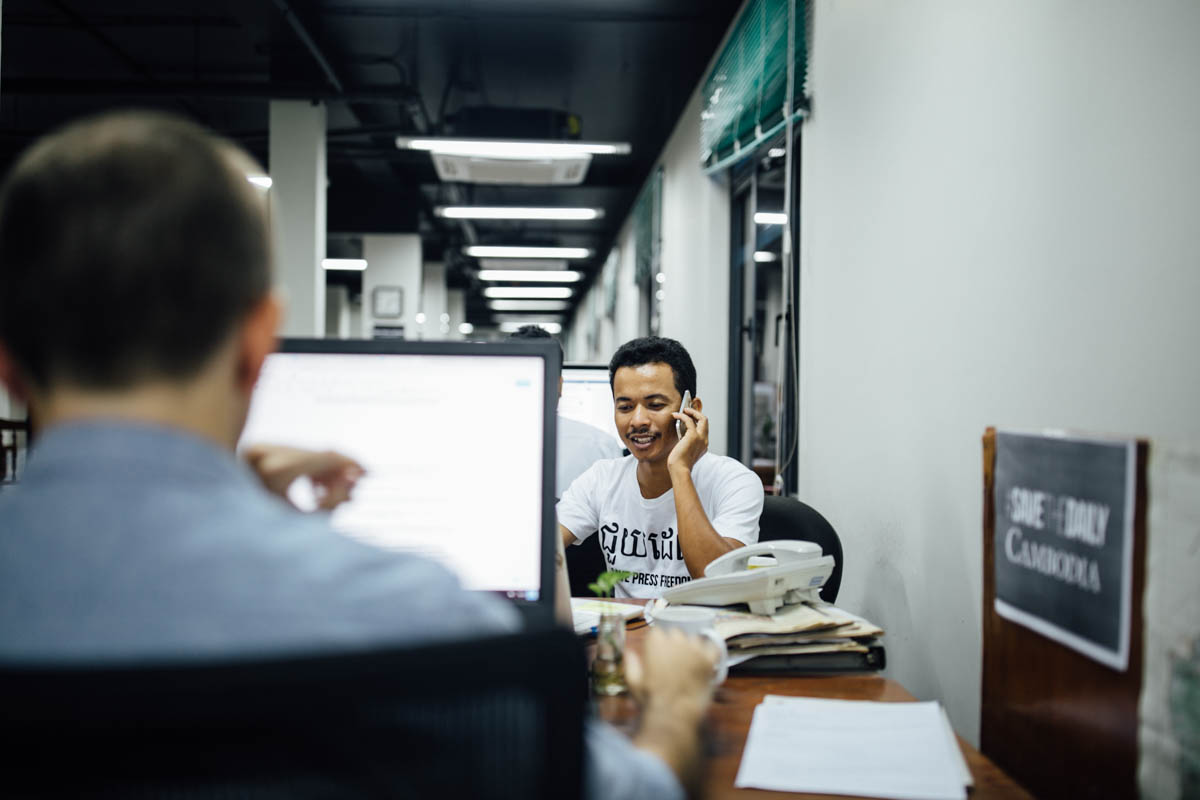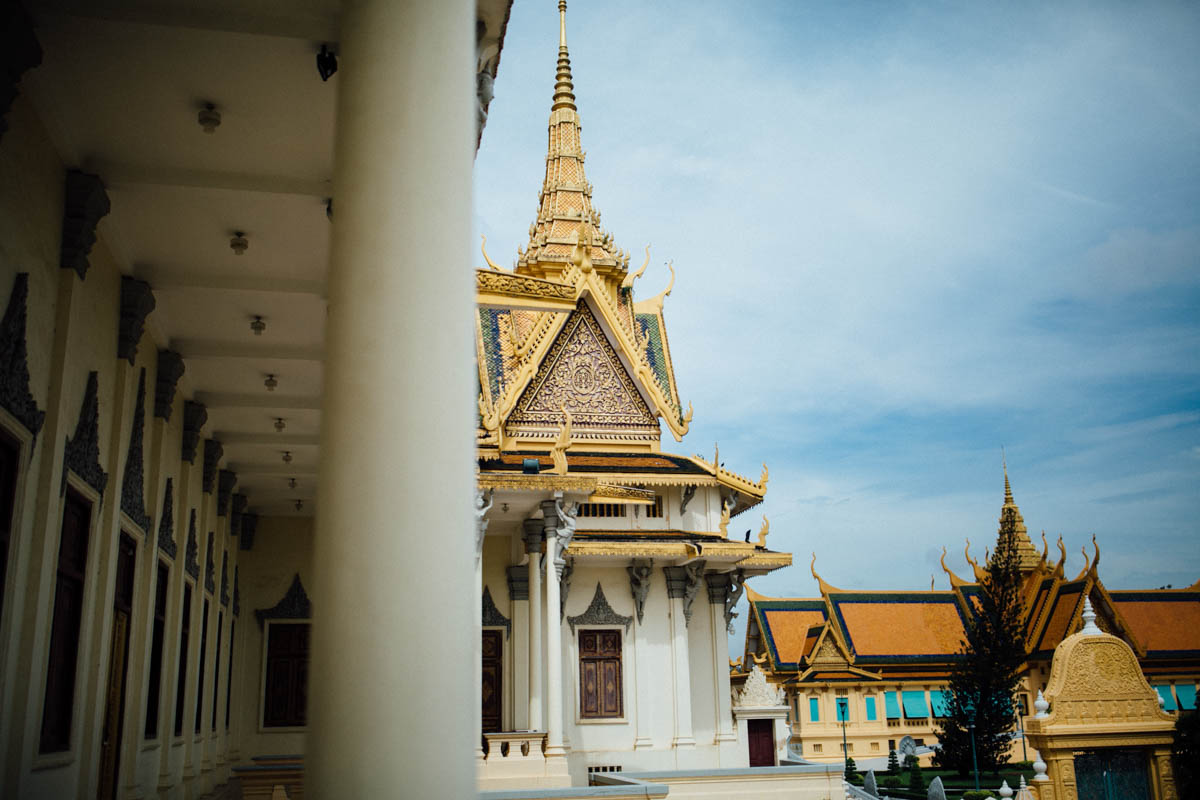
Just 12 hours before the paper’s final print deadline, a Cambodian Daily colleague and I threaded our motorbike through the traffic jams and thigh-high water that filled the flooded streets of Phnom Penh, on our way to cover the arrest of political opposition leader Kem Sokha.
It would be one of the last stories ever published by the paper.
After 24 years of serving as one of Cambodia’s two independent daily newspapers, the Cambodia Daily printed its last edition in early September amidst a widespread government crackdown on free press.
Founded in 1993 by former Newsweek correspondent Bernard Krisher, the Daily has served as a diligent watchdog. Under the motto “without fear or favor,” staff carried out its mission through fierce coverage of thorny topics like illegal logging, corruption, and land evictions.
The paper served as an incubator for a generation of young Cambodian and foreign reporters, with some going on to report at major outlets like The Associated Press or The New York Times and some continuing at the Daily for nearly 20 years.
In the weeks leading up the the Daily’s closure, about two dozen FM radio stations were also ordered to either shut down or comply with government demands for coverage, disproportionately affecting Cambodian radio broadcaster Voice of Democracy and the U.S.-funded Radio Free Asia and Voice of America. The week before, the prime minister expelled foreign staff of the U.S.-funded NGO National Democratic Institute, allowing them a week to leave the country.
The Daily’s sentence came in the form of an exorbitant $6.3 million tax bill, which staff and government critics alike insist was politically motivated; the tax office set the amount without even looking at the paper’s accounts.
In rural areas, the crackdown on radio stations has left tens of thousands without access to independent media. Within the span of my three-month fellowship reporting for the Cambodia Daily, the mirage of pluralism, democracy and freedom of press in Cambodia had been shattered.
The Daily’s last day of production, Sept. 4, exemplified the staff’s tenacity and dedication to pursuing the facts.
At 12:35 a.m, opposition leader Kem Sokha was arrested on charges of treason and accused of colluding with the United States to topple the government. Throughout the night, a team of Daily journalists reported on Mr. Sokha’s whereabouts and filing developments in a live blog. (In Cambodia, people’s family names precede their given names and for this story, we’re using the Cambodia Daily style of using a person’s given name and title.)
In the morning, they traded with another wave of reporters who continued reporting on Mr. Sokha’s arrest and, later on, the authorities’ attempt to arrest the opposition party’s youth leader.
The office buzzed with the characteristic chaos of a newsroom — phones ringing, papers flying, reporters pacing back and forth while making calls. Nearly every Daily staff member played a role in covering the event, sharing everything from sources to cellphones.

At the end of the day, the story had eight names in the byline, with both foreign and Cambodian journalists working together to produce one of the country’s only independent newspapers.
As the afternoon light grew dim through aluminum blinds, the newsroom filled with alumni staff offering help and mourning the paper’s closure.
At 5 p.m., the familiar call of “Board up!” pierced the mayhem, signaling the emergence of the production whiteboard dotted with word counts and page numbers. Reporters gathered around the board one last time, all of them sombre as they gazed at the outline of the Daily’s last edition.
After the last page had been sent to print, the newsroom crowd moved to a Khmer BBQ joint down the street for a “Daily Wake.” Beer and stories flowed around five long tables pushed together to accommodate the 40-some current and former staff who came to show their respects.
What started out as a sombre gathering quickly turned into a celebration of the Daily’s legacy and the relationships built within its walls. “To the Daily family,” cheered news editor Chhorn Chansy, and 40 glasses clinked.
Since the paper’s closure, the Cambodian Tax Department has accused the Daily’s management of tax evasion and filed a legal complaint against its founder and two directors, which could serve them up to six years in prison.
The department also issued a travel ban for Daily General Manager Douglas Steele, who was in Cambodia during the paper’s closure. His personal bank account was frozen, as were the accounts connected to the Daily’s NGO, World Assistance for Cambodia.
Many of the Daily’s former reporters have stayed in the country, freelancing for international publications or taking jobs in the NGO world.
Throughout its 24 years in print, the Daily has been a symbol of accountability amidst a shaky United Nations-sponsored attempt at democracy.
In 1991, the U.N. oversaw an agreement between Cambodian factions, which had been at war since 1979. That same year, the Vietnamese army, aided by a Cambodian contingent that included current Prime Minister Hun Sen, toppled the Khmer Rouge regime.
The signing of the 1991 Paris Peace Agreement led to the 1993 national democratic election overseen by the U.N., and the subsequent new round of national elections every five years.

Sebastian Strangio, author of “Hun Sen’s Cambodia,” said the upcoming 2018 election has been a catalyst for the recent crackdown on free press and political opposition.
With only one independent daily newspaper, the Phnom Penh Post, remaining, and no semblance of political opposition, the Cambodian government slid into what the Daily’s last issue called an “outright dictatorship.”
“The democracy made more than 20 years ago is lost,” said senior editor Van Roeun, a Cambodian who joined the Daily in early 1997. “It disappeared in just a moment.”
The Cambodia Daily served a dual purpose as both an established, trusted watchdog institution and a training grounds for young reporters like Mr. Chhorn, who joined the paper in 2007.
“We have tried our best to bring the real issue, the real news, to the reader and to the government officials,” said Mr. Chansy, who was known for finding scoops on breaking news and giving guidance to younger reporters. “I feel very sorry that our Cambodian people will no longer be able to receive the independent news. They can receive only one side, so they may not understand the whole issues of the country.”
In rural areas, the crackdown on radio stations has left tens of thousands without access to independent media. “With the independent media gone, all you can know is the basics that you can get from government media,” Mr. Rouen said. “People will see the surface of the water, but they will not be able to see the depth of the river.”
Daily reporter Aun Pheap was a child during Cambodia’s Khmer Rouge regime, which claimed the lives of 2 million people in less than four years during the mid-1970s. For him, the recent government crackdown is reminiscent of tactics used during that regime.
“Even though they changed the approach away from killing and torturing, it still is another way of oppressing,” Mr. Aun said.
In the weeks before the Daily’s closure, I began noticing similarities between the media landscape in Cambodia and that in the U.S.
Then last month, two Daily reporters were charged with “incitement to commit a felony” for seemingly routine reporting on communal elections, similar to U.S. county elections. The charges drew an uncomfortable parallel to the felony rioting counts facing those Washington D.C. journalists caught up in mass arrests while covering the 2017 inauguration protests.
All the U.S. journalists but two have since had charges against them dropped. The trial of independent photojournalist Alexei Wood started last week. Another reporter, Aaron Cantu, who was covering the protest for an online publication and now writes for the Santa Fe Reporter, was charged in May and faces 60 years in prison. They were arrested along with non-journalist citizens arrested in what is being called the J20 trials.
Also, last month, an Indiana lawmaker proposed a statewide initiative requiring journalists to be licensed. The measure isn’t likely to find support, but it fits into a broader rhetoric of mistrust towards the media brewing since the 2016 election.
University of Washington media law professor Richard Kielbowicz believes the U.S. is unlikely to see an outright crackdown on the media. Instead, the country faces a different threat.
“The biggest problem, frankly, is revenue-based,” Kielbowicz said. “In a sense, these are long-term, bigger concerns for the media than Trump.”
But in Cambodia, as the last fellow to join the Daily’s team, I witnessed just how quickly free press can disappear, in — as Jodie DeJonge, the paper’s editor-in-chief, put it — “a country moving backward, in a world that is moving backward.”

